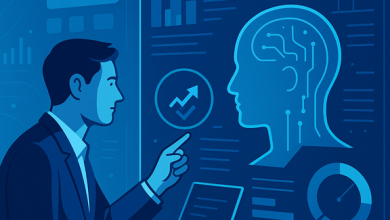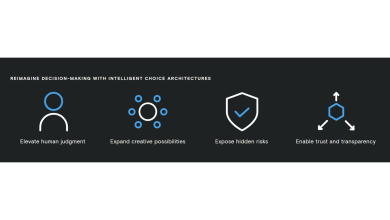
There’s a conundrum afoot today in B2B sales. Research shows that nearly two-thirds of B2B buyers prefer to make their decisions without input from sales staff – at all – as they seek out friction-free buying experiences, akin to their B2C buying experiences.
But that might not be such a good idea for buyers, who likely would benefit from some guidance on the finer points of a deal or product, and could also use the interaction to build a relationship with the seller, if only for better service in the future. Cutting out such interactions is also not always in the vendor’s best interest. At the very least, companies selling products want some interaction or follow-up to ensure that the client is fully satisfied, and is not spreading negative information about services or products.
AI systems, especially those that use agentic AI, can help solve this conundrum. These rapidly-developing tools go far beyond analyzing data and helping vendors reach the right clients; they actually help carry out the purchase process in a smoother manner while laying the groundwork for strong future relationships, giving customers the opportunity to make purchases on their own terms, while providing assistance when it is needed.
Data clearly shows that B2B customers want as smooth an experience as in B2C transactions – and indeed, many B2B customers treat their business transactions as they do their consumer ones. As many as 90% of B2B buyers do research, sometimes extensively, before making a purchase; 87% of B2C customers do so as well. Over 70% of B2C customers abandon their carts before purchase, indicating dissatisfaction with some aspect of their experience; 86% of global B2B buyers would switch vendors if they could get a better purchasing experience. And between 80% and 90% of B2B buyers say that personal recommendations, peer recommendations, social media, and online reviews are important influences on purchase decisions – numbers similar to those for B2C customers.
Reaching Customers On Their Terms
At the same time, that means that more than 25% of potential buyers are open to communications and interactions with salespeople. What B2B sellers need is a system that will enable them to engage with customers in the most effective manner – on their own terms, providing them with a B2C-like experience, or helping them through the stages of the purchase experience. Agentic AI can automate these initial stages of the funnel to meet the needs of both types of customers, those who want to carry out research independently and those who want advice and interactions with vendors from the outset.
By automating the initial stages of the sales funnel – the stages where customers want to do their own research – sales organizations can still present their products and services in a tailored manner, building an initial relationship with potential customers that will hopefully progress. And when that relationship does progress, organizations can insert the human factor, ensuring that the relationship is nurtured and strengthened until a sale is closed – and beyond.
Data-Based Decision-Making
Data about clients – drawn from the organization’s own CRM – along with responses to e-mail, chat apps, social media, and phone calls can be analyzed to understand a potential client’s needs and preferences. Data from those initial interactions will enable companies to tailor a sales approach geared specifically to that customer.
If customers want to research choices on their own, the seller’s AI system can provide them with solid information on their own and competing products and services – and the AI system can guide the seller on the best way to deliver that information, whether by email, a video presentation, or an initial phone call. If customers require more input from the seller, salespeople can reach out and build relationships with them from the outset. And the system can provide guidance on the specific point when a salesperson should be involved.
With barely 8% of emails getting a response from customers, this tailored approach will likely be far more successful. Sellers who use agentic AI, which gathers and analyzes data on which customers to approach with a traditional B2B salesperson-client relationship, or with a purely B2C experience, will likely experience a far better response rate.
Closing the Deal
Agentic AI provides additional benefits – to both sellers and buyers. Follow-up contracts, renewals, additions, maintenance agreements – the lower-complexity transactions that usually accompany a major B2B purchase – can be handled by AI systems that can automatically issue estimates, contracts, changes, and other data needed to maintain a buyer-seller relationship – freeing staff from having to manually follow up on routine transactions that need to be dealt with, but have little added-value for salespeople, who could – and should – be focused on expanding sales and building relationships. And if clients have their own agentic AI systems, those transactions can be handled on their side by those systems as well – enabling them to save time and energy, freeing them up to focus on their core business.
Time is money – not just for salespeople, but for customers, too. There are indeed many things customers can do efficiently on their own – like research for the products and services they need, B2C style. Having that knowledge gives them an edge in the sales relationship – because they already know a lot about a potential purchase from a potential supplier.
But some customers still want full service from their vendors. With agentic AI, sellers can ensure that both types of customers get what they want and need.




